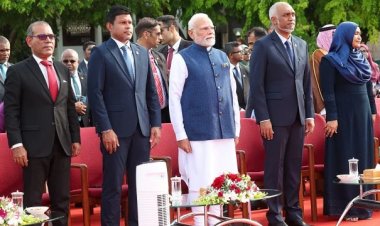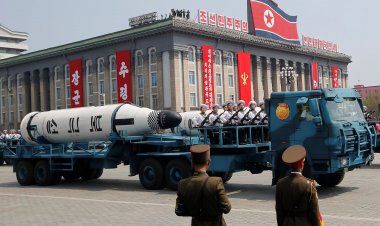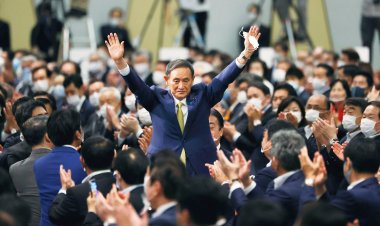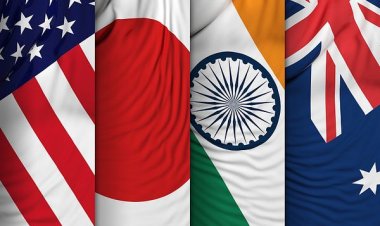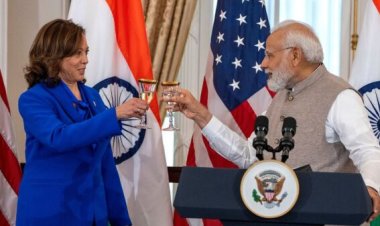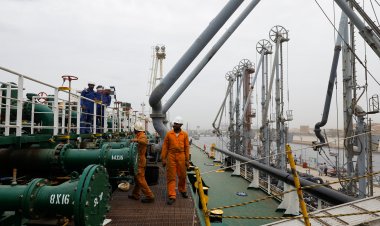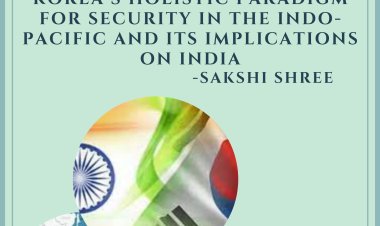Trump’s Retreat from Southeast Asia: Can ASEAN Restore Strategic Balance?

Analysis
By Nikita Anand
The recent visit of U.S President Donald Trump to the ASEAN summit held in Malaysia escalates important questions regarding the stance of Trump’s administration towards Southeast Asia. The visit evokes the thought of whether it was to change the narrative of the USA; engagement in the region to showcase its existing influence, or to counterbalance China’s growing dominance in the region through its large-scale investments.
Conditional Trade Agreements and Market Access Costs
It was noted at the 47th ASEAN Summit that several trade agreements were signed, including reciprocal trade agreements with Malaysia, export controls and duty evasion agreements with Cambodia, agreements on supply chain cooperation with Thailand and Vietnam. All of these came at a significant cost. In order to get easier, get to the US market, these countries are expected to meet certain conditions. The USA asked them to buy more USA goods, like aircraft, farm products, energy products, and to support its economy and security goals by prioritizing them. At the same time, Thailand and Vietnam are expected to follow the same lines set by Malaysia and Cambodia by lowering tariffs on US products and easing market entry for American businesses. At the same time, trade negotiations between the US and Southeast Asian countries led to the imposition of tariffs 20%, along with 40% on transshipped goods passing through ASEAN. This seemed to many countries as unjustified and vague, and also appeared to target China’s role in the regional supply chain.
Trump’s moves were seen in contrast to President Biden’s approach, which was often seen as a strong dealmaker, whereas Trump treats these engagements as business transactions, presenting the USA as a fair partner. The trump administration focused more on bilateral agreements.
U.S. Dominance Dictates Terms of Engagement
Some experts suggest that all of these deals were a carefully crafted strategy to reassert its dominance in the region while positioning itself as a strategic alternative/rival to China. Malaysia, for instance, pledged to lift restrictions on rare earth exports in exchange for increased U.S. investment, further highlighting the transactional yet strategically calculated nature of these engagements.
This showcases a very asymmetrical relationship, with the USA strategic dominance, which is largely dictating the terms of engagement with South East Asian countries, which includes on tariffs, transshipment issues, and its emphasis on security over development.
ASEAN's Diplomatic Efforts
The ASEAN counties on the other side made considerable efforts to flatter Trump Administration by focusing on traditional diplomatic practices, adopting informal tone, exchanging jokes, and also portrayed Trump as a peacemaker by Trump being present for the peace signing agreement between Cambodia and Thailand by offering him the opportunity to sit there, having the opportunity allowed the U.S leader to participate in photographic events, presenting himself as a peacemaker and reinforcing its strategic influence in the region
All these attempts made the visit successful and favourable in a way, which will be for the short-term, as they came at a significant cost. ASEAN countries had to compromise on their own trade positions, also missed it opportunity to show their collective strength, which weakened their bargaining power during negotiations.
It was also observed that after meeting with Mr Trump, the following day, Malaysian Prime Minister Mr Anwar met with China, aiming to emphasise ASEAN’s centrality. The purpose of the meeting was to enhance the trade agreement between ASEAN and China, known as ASEAN-China Free Trade Area (ACFTA). China is ASEAN’s largest trading partner and the third-largest source of foreign direct investment. In 2024, ASEAN-China trade reached US$777.2 billion (S$1 trillion), while Chinese foreign direct investment in the region stood at US$19.3 billion
Weakening U.S. Economic Influence
During Trump’s term in 2017, the USA's withdrawal from the Trans-Pacific Partnership (TPP) changed the way of its engagement with Asia. This decision led to the strengthening of the U.S economic influence in the region, and created a space that allowed power like China to expand its economic reach in Southeast Asia. While the pace at which the bilateral trade agreements with the USA slowed down, several of them were abandoned altogether.
In response, regional actors accelerated the formation of the Regional Comprehensive Economic Partnership (RCEP), led by China and supported by Japan. The agreement underscored a collective commitment to economic growth, covering over 90% of traded goods, aiming to eliminate tariffs, and promoting greater foreign investment across the Asia-Pacific region. Even the Indo-Pacific Economic reform launched in 2022 had to reassert its influence after leaving TPP was not successful, as it had to compete with RCEP. This was where we saw ASEAN partners prioritizing the gains which came from RCEP, like tax reduction and access to U.S markets, while IPEF was seen in favour of USA interests in terms of development and finance.
U.S. Focus on Security Over Economic Development
It was also seen that security operations like Freedom of Navigation Operations (FONOPs) and participation in ADMM-Plus remained active and assertive. Not only this, it was noticed that Trump missed almost every East Asia Summit and attended only one ASEAN–U.S. Summit, leading to an imbalance in its relationship with ASEAN. This led China to advance its relationship with ASEAN and build a narrative that the USA was more interested in maintaining its military presence rather than working on economic development in the ASEAN region.
.
Moving forward, this will result in a challenge for ASEAN countries to maintain their relationship with both major powers- the USA and China. However, ASEAN should reflect on its past engagements with the USA to ensure that future engagements are guided by strategy, unity, and a sense of regional autonomy.
Southeast Asian countries mustn't fall “between two stools” will trying to maintain the strategic balance between the superpowers. Southeast Asian countries must understand the importance of equilibrium to maintain their own foreign policy and adopt approaches like the ASEAN outlook on the Indo-Pacific (AOIP), which came in 2019, which worked on transparency, inclusivity in order to strengthen its own regional order.
ASEAN maintaining balance in a Multipolar World Order
The success of ASEAN is built on its ability to balance its political centrality and its commitment to economic and security resilience, within a dynamic multipolar world order. Recognizing the global influence of multiple powers, ASEAN wants to position itself as the necessary and respected intermediary. Global actors like Australia, Japan, India, and the EU actively choose to engage with the region through ASEAN-led platforms, such as the East Asia Summit and the ASEAN Regional Forum, rather than attempting to bypass the organization. The neutral approach makes the ASEAN region a more stable and less risky business environment, attracting foreign investment. Consequently, more companies are shifting production and investment into ASEAN countries; for example, the Philippines has witnessed a major manufacturing operational shift away from China and into its territory since 2023, underscoring the strategic value of this mutual respect and coexistence.
Using such approaches and methods would allow the region to maintain balance between predatory China and highly mercurial US, to safeguard its autonomy while at the same time engaging with both the powers. In response to the U.S' new tariffs and trade policies, several countries have now begun to pursue strategic diversification through initiatives like Comprehensive Economic Partnership Agreements and Free Trade Agreements with non-traditional partners like the European Union, the Gulf Cooperation Council (GCC), and the Russia-led Eurasian Economic Forum.
Disclaimer: This paper is the author's individual scholastic contribution and does not necessarily reflect the organization's viewpoint.
Nikita Anand is currently working as an Assistant Manager at O.P. Jindal Global University. She has completed her Master’s in Diplomacy, Law, and Business, and her areas of interest lie in foreign policy.

